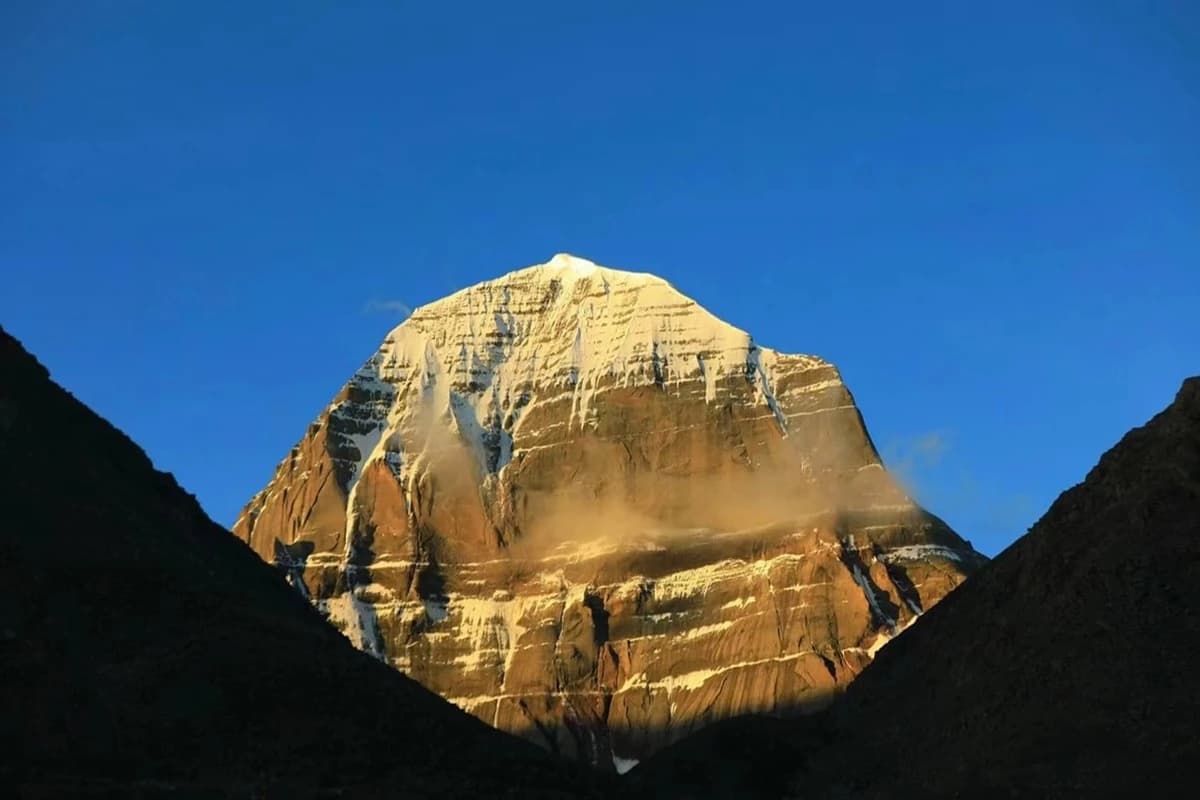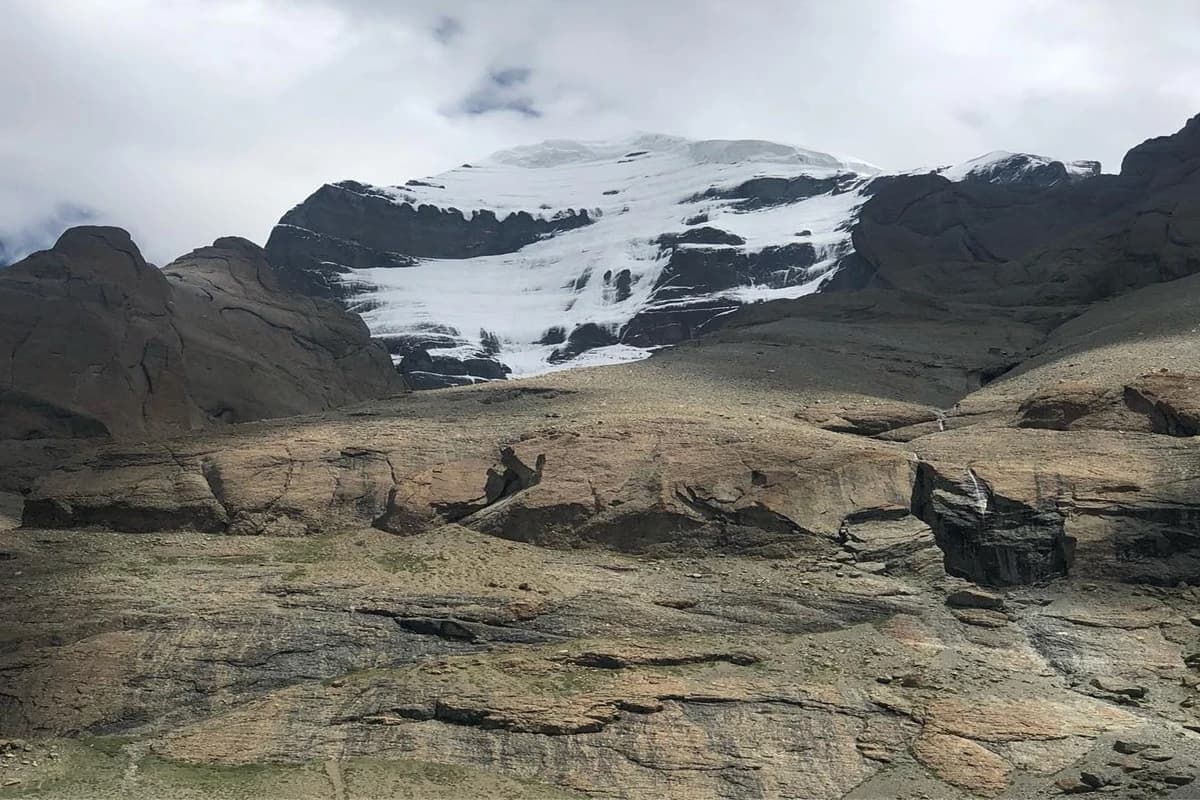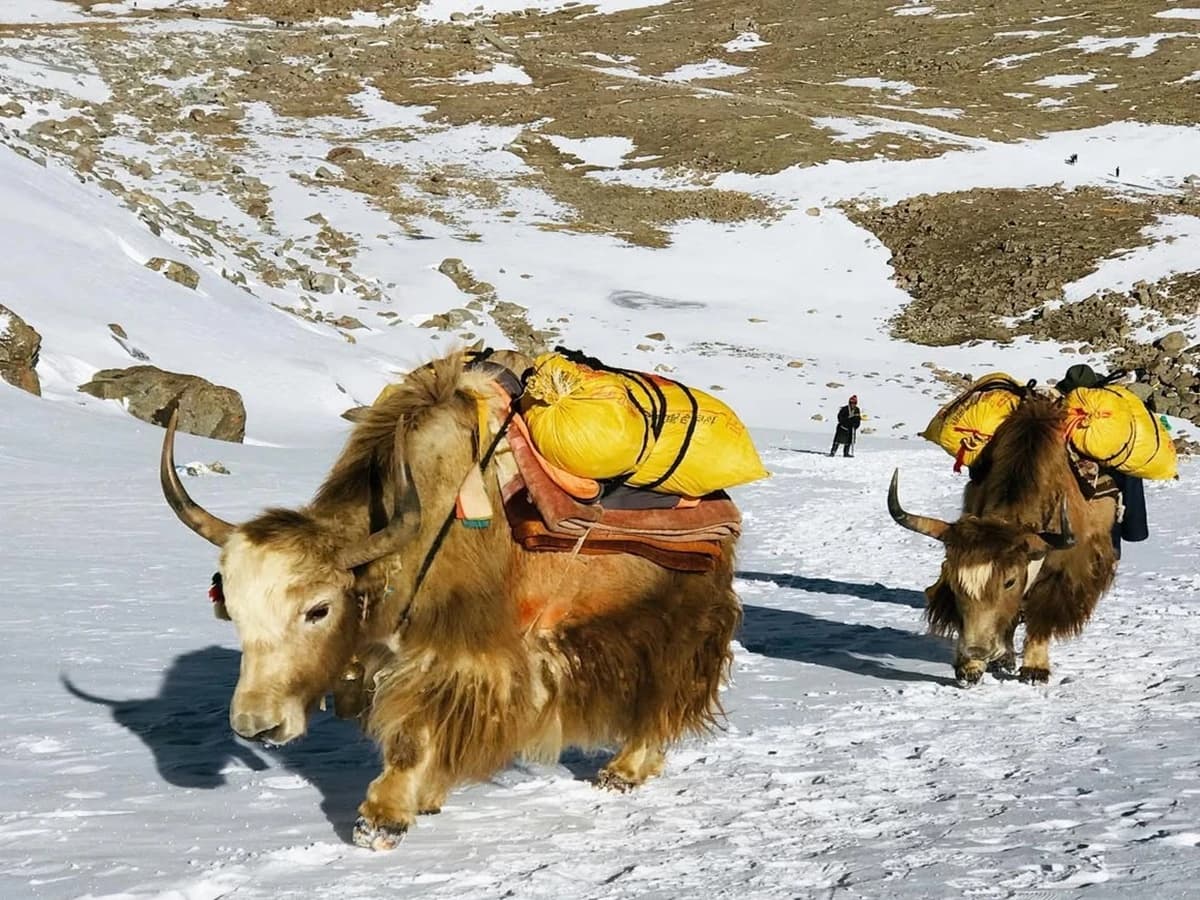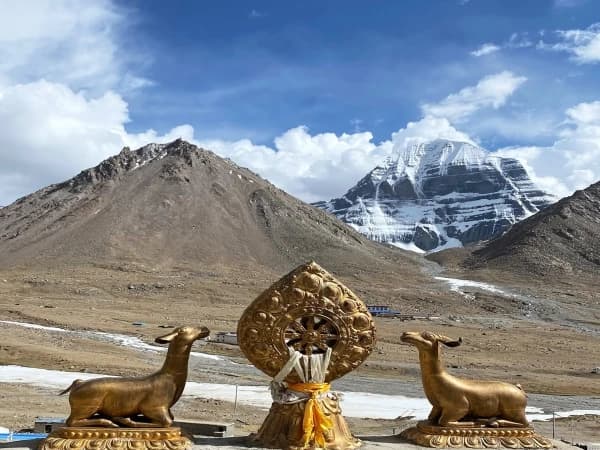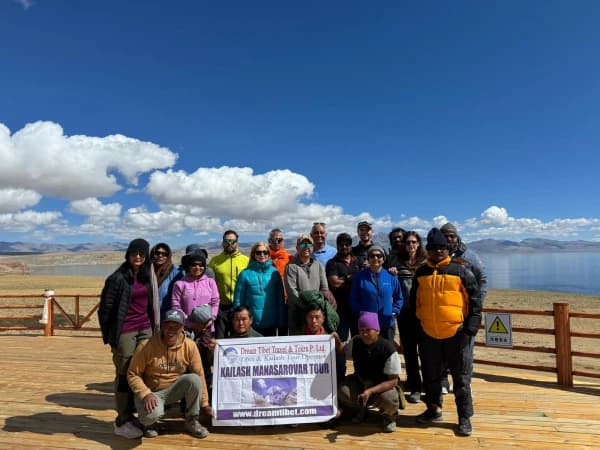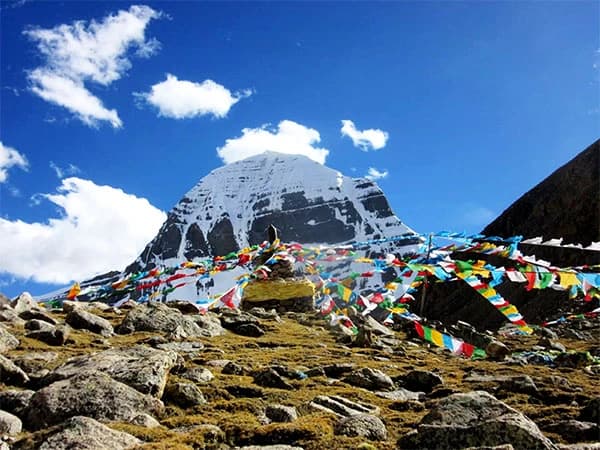Introduction to Kailash Mansarovar Yatra Shortest Tour 7 Days
The 7 day Kailash Shortest Tour is a small and effective pilgrimage trip to Mount Kailash. It is the best choice for seasoned trekkers and spiritual travellers who are accustomed to high-altitude travel. Also, they do not want to spend long acclimatisation periods in hotels.
The Mount Kailash Yatra is regarded as one of the most sacred pilgrimages in Asia. It is believed to purify sins and bring spiritual freedom. Circumambulation (Kora) of Mount Kailash and a visit to Lake Mansarovar are sacred experiences. These are important to Hindus, Buddhists, Jains, and Bon followers.
Your adventure starts at Kathmandu. From there, you will quickly move to the Nepal-Tibet border at Kyirung (Kerunge). Then, you proceed to the Tibetan Plateau. The path takes you across Saga and Paryang. You will see breathtaking sights of vast plains and distant Himalayan ranges. Next, you arrive at Lake Mansarovar, the most sacred freshwater lake in Tibet. Pilgrims traditionally bathe and meditate along its shores.
The main experience is the Kailash Kora, which lasts about three days. There are two routes to completing the holy circle - the Dira-Puk route and the Zuthul-Puk route, which reaches above 5,000 meters. One of the areas symbolically significant on the journey is Dolma La Pass.
After completing the holy circle, you return via Saga and Kyirung back to Kathmandu. If you prefer to walk at a quicker pace, this journey will suit you well. It is ideal for those with some trekking or high-altitude hiking experience.
The fast Kailash trip offers a complete adventure. You will drive through stunning Tibetan landscapes and spend nights above 4,000 meters. We designed it this way so you do not have to take long layovers. This allows you to focus on the pilgrimage itself.
This Short Kailash Tour package provides the highest spiritual and scenic impact with the least time spent. The tour takes you through remote roads of the Tibetan plateau, overnight stays in high-altitude guesthouses and hotels, the classic Kailash Kora route, and then a tight schedule back to Kathmandu.
This makes it the shortest complete Kailash tour. If you are accustomed to walking and exploring, this is a fantastic option.
You can learn about the Kailash pilgrimage in a few days with as much experience as possible.
Highlights of 1 Week Kailash Shortest Tour
- Start with an early departure out of Kathmandu, with a drive to the Kerung (Kyirong) border with Tibet.
- Overland tour of the Tibetan plateau, visiting the main spiritual sites.
- Explore Lake Mansarovar, the holy freshwater lake of Mount Kailash.
- Stop by such sites as Rakshasa Taal (Lake of Demons) and Chiu Gompa monastery.
- Behold the great Mount Kailash, the 6,638-meter pyramid edifice, held sacred by the Hindu, Buddhist, Jain, and Bon religions.
- Experience and participate in Kora Parikrama (circumambulation) around the base of Mount Kailash.
- Feel the great spiritual atmosphere of the Trans-Himalayan landscape in a small and effective pilgrimage.
- Gives an exclusive opportunity to experience one of the most sacred mountains in the world and the holy geography around it in a 7-day overland format that is comfortable.
What are the Benefits of the Quick Kailash Mansarovar Tour?
- Time efficient: The shorter itineraries give you the chance to see Mount Kailash / Lake Manasarovar in fewer days, and because of this, the trip can be successfully completed even without many days of vacation.
- Lower logistics burden: A shorter route implies fewer nights on the road, reduced transit period, and reduced planning (reduced likelihood of getting stuck in bad weather or by problems with altitude acclimatization).
- Accessible for varied fitness levels: The shortest tours usually do not follow the entire long Kora (circumambulation), but rather the easier path, which makes them more available to travellers who might not have time (or full fitness for trekking).
- Spiritual fulfillment in shorter span: A brief pilgrimage can be a profound experience, although visiting the mountain, Lake Manasarovar, soaking up the holy scenery, all this in a short route, is still possible to attain a profound pilgrimage.
- Cost-saving potential: Since the pilgrimage will be shorter in length, it is likely cheaper in terms of accommodation/transport/meals costs.
- Less physical strain: Since you are completing a shorter option, you may not have to go through some of the most intense climbs or longest walking days, putting less stress on the risk of exhaustion or altitude-related complications (although high altitude also comes into play).
- Flexible for people with other commitments: A shortest-tour option fits the Kailash pilgrimage into your schedule, even in case you have other travel, work, or personal commitments.
Fast Paced Kailash Mansarovar Yatra Itinerary Route for Experienced Trekkers 2026
This is a fast-paced Kailash Mansarovar Yatra and is recommended only to experienced Trekkers who are used to the high altitude conditions. The primary factor that makes us, as a tour operator, recommend it only to experienced hikers is that the entire pilgrimage is to be accomplished within only 7 days. The plan involves arriving at Mount Kailash, Dolma La Pass, and Lake Mansarovar within a very limited time.
The journey is physically challenging; thus, prior experience of walking high-altitude routes is required. The mental preparation is also essential because the trekkers will have to walk long distances, have little rest, and encounter severe weather conditions. To individuals who have never been exposed to high altitudes, this adventure could be dangerous given the potentiality of altitude sickness and fatigue.
To less experienced travelers, we suggest other Kailash trekking itineraries that are more protracted in time and allow gradual acclimatisation, and this way, a more secure and enjoyable experience of this holy area.
Important Note: Only for Experienced Trekkers / Pilgrims
- Even the shortest tour of Mount Kailash is not a walk of leisure in the mountains - it is a high altitude, physically and psychologically demanding pilgrimage. The reason why you must recommend it only when you are reasonably experienced is this:
- The altitudes are extremely high: the tour involves stay/trek above 4,000 m and there are sections which reach as high as 5,630 m (Dolma La Pass) in some parts of the route.
- Risk factors are augmented by terrain, weather, and remote location: rocky/uneven trails, unpredictable weather (snow, wind, cold), and very limited facilities.
- One of the key issues is altitude sickness (AMS): even physically fit individuals may have symptoms at high altitude.
- Remoteness entails a lack of support: the medical facilities, evacuation opportunities, and levels of comfort are not as high as in regular tourist destinations.
- Thus, a shortest tour can be shorter in number of days, but nevertheless it requires good physical shape, mental stamina, adequate preparation, and a certain amount of prior trekking or high-altitude experience. In the absence of it, the subjects will encounter severe challenges or fail to enjoy the ride.
Reaching Mount Kailash: What Your Body Feels Like with the Shortest Yatra Itinerary?
Lake Mansarovar (near to 4,550‑4,600 m)
When you reach Lake Mansarovar, you are already at the altitude of 4,550 to 4,600 m.
How your body feels: You will most probably realize that your breathing is heavier, particularly when moving. Your legs might be more fatigued than normal. There may be increased restlessness of sleep, and there is usually a slight headache, or a light-headed feeling, due to the thinness of the air. It is the most important time to relax, hydrate and allow your body time to acclimatize to a higher level.
Yamdwar / Starting trek to Kora (near to 4,700‑5,000 m)
You are going into altitudes of about 4,700 to 5,000 m at Yamdwar and then the following night at such locations as Dira-Puk.
How your body feels: Breathing is even faster with very little effort. Your pulse may rise at rest. Even slightly difficult tasks, such as walking up a hill, will become even more difficult. You might get tired sooner than anticipated. It is important to be well-hydrated and moderate the effort.
Dolma La Pass (5,630‑5,650 m)- The Highest Point
It is the most challenging and the topmost spot of the pathway that is 5,630 to 5,650 m.
How your body feels: The thin air will consciously be felt here. Inhalation will be extremely difficult, and you will be forced to take frequent pauses to get your breath. Headache, nausea, or dizziness may occur. The altitude will strain muscles and joints.
The weather gets further unpredictable (wind, cold), and the mental pressure of relocating in such circumstances takes its toll. That is why such a hectic schedule should be tried only by experienced trekkers.
Daily Schedule Overview of Fast-Paced Itinerary, Trek Distance and Altitude Change
|
Day |
Route |
Trek Distance |
Starting Altitude |
Ending Altitude |
Altitude Change |
Overnight Altitude |
Sickness Risk* |
Expected Duration and Breaks |
|
1 |
Kathmandu → Kyirung (Drive) |
– |
1400 meters |
2900 meters |
1500 meters |
– |
Low |
Approximately 6 to 8 hours driving, light acclimatisation stop midday |
|
2 |
Kyirung → Saga |
– |
2900 meters |
4450 meters |
1550 meters |
4450 meters |
Medium |
Approximately 7 to 9 hours drive, rest stops every 2 to 3 hours |
|
3 |
Saga → Paryang → Mansarovar |
– |
4450 meters |
4600 meters |
150 meters |
4600 meters |
Medium-High |
Approximately 8 to 9 hours drive, 1 to 2 longer breaks |
|
4 |
Drive to Yamdwar → Trek to Dira-Puk |
15 kilometers |
4600 meters |
5000 meters |
400 meters |
5000 meters |
High |
Trek 7 hours, with 2 rest breaks of 30 to 45 minutes plus lunch stop |
|
5 |
Trek Dira-Puk → Zuthul-Puk |
18 kilometers |
5000 meters |
4900 meters |
-100 meters |
4900 meters |
High |
6 to 7 hours trekking, with midday 45 to 60 minutes break and shorter afternoon rest |
|
6 |
Complete Kora and Drive to Saga |
– |
4900 meters |
4450 meters |
-450 meters |
4450 meters |
Medium |
7 to 8 hours including trek and drive, multiple brief stops |
|
7 |
Saga → Kyirung → Kathmandu (Drive) |
– |
4450 meters |
1400 meters |
-3050 meters |
– |
Low |
8 to 10 hours driving, rest every 2 to 3 hours plus lunch break |
Who Should Avoid the Short Kailash Itinerary?
- Anyone who has not trekked high altitude before.
- Trekkers with heart or lung disease (high blood pressure that is uncontrolled, severe asthma) - high altitudes exacerbate these risk factors.
- Individuals who have not undertaken adequate physical training (cardio, strength, endurance) to acquire altitude quickly.
- Those who are not able to stick to the fast timetable and low rest/acclimatisation period.
- Travellers who are not willing or cannot carry equipment and hike over rugged landscapes, days of walking, and areas of seclusion.
- There are age/fitness thresholds that the operators apply to those above the normal recommended age or those with severe health problems.
- Any person who likes a slightly more relaxed itinerary that includes slower acclimatisation of altitude as opposed to the brief, sharp burst.
Comparison: Short Kailash Tour vs. Regular 10 to 14 Days Tour
|
Feature |
Short Tour |
Regular 10‑12 Days Tour |
|
Duration |
Very condensed itinerary; fewer days, less buffer time. |
Longer duration allowing more rest and acclimatisation. |
|
Pace |
High pace: long driving/trekking days, quick transitions, minimal downtime. |
Moderate pace: more time for rest, acclimatisation, sightseeing. |
|
Acclimatisation |
Limited acclimatisation days; higher risk of altitude issues. |
Better acclimatisation built in; lower risk of altitude sickness. |
|
Suitable for |
Experienced trekkers with previous high‑altitude experience, strong fitness. |
Wider audience including travellers with moderate fitness and less high‑altitude experience. |
|
Flexibility |
Less flexibility: set timetable, minimal time to occupy with extras or delays. |
More flexible: opportunity for side visits, cultural stops, slow recovery. |
|
Cost |
Generally lower overall days but may include premium for speed; high altitude risk. |
Might cost more in days/hotel/food but may balance with fewer physical risks and more comfort. |
|
Experience depth |
More seriously focused on the main pilgrimage sites; more physically demanding, less time for exploration. |
More immersion: includes cultural site visits, more scenic stops with longer time permanence in all sites. |
|
Risk factors |
Greater fatigue and risk of altitude sickness, less ‘room for error’ related to logistics to account for all factors. |
Less risk related to fatigue/altitude: more recovery time, more support if delays or altitude/ fatigue problems arise. |
1 Week Kailash Mansarovar Itinerary 2026, 2027
The Kailash Shortest Tour itinerary is made to suit travellers who would only have to complete the holy pilgrimage within one week. Thus, it is ideal for those who may not have much time to spend. Yet, they still want to have the spiritual experience of Mount Kailash and Lake Mansarovar.
We use the overland route from Kathmandu to Kyirung, and then head to Soga, Paryang, and Lake Mansarovar. The journey entails a hike to Dira-Puk and Zuthul-Puk. These make up the most crucial section of the Kailash Parikrama.
Afterwards, we travel back through Saga and Kyirung to Kathmandu. The tour encompasses all the mountainous areas, holy places, and spiritual places in the region. It does so within a tight-packed, time-pressed tour.
The Kailash Mansarovar road, which is the shortest, includes: Kathmandu - Kyirung - Saga - Paryang - Mansarovar - Dira-Puk - Zuthul-Puk - Saga - Kyirung - Kathmandu. Moreover, we additionally provide tailor-made services in case you wish to make the itinerary to suit your personal taste. This ensures you get a memorable and manageable pilgrimage experience in only 7 days.
Cost of Kailash Mansarovar Yatra 7 Days 2026/27
The prices of the Kailash Mansarovar Yatra 7 Day Tour Package can be different depending on the number of people. The cost per head on the bed and breakfast (B/B) basis is US $1550 in case of a group of four people.
In the case of 5 to 7 people, the cost is slightly lowered to US$1490 per person because of shared logistical and accommodation costs.
Bigger parties of eight to ten individuals can be offered a discounted offer once again, with the individual cost pegged at US$1400.00. When it comes to eleven to fifteen people, the cost goes down even further to US$1350.00 per head, and consequently, it is much more affordable for bigger groups.
Full Board Supplement
Travelers who want everything covered can choose Full Board Supplement at an extra price of US $ 350.00 per person. It includes breakfast, lunch, and dinner during the trip and gives a convenient alternative to people who do not want to organize meals separately.
Extra Costs: Visa Fees
All participants will need a Tibet Visa fee, which will cost US$125. In the case of USA and Canada travelers, an extra visa processing fee of US$90 is incurred, and this brings the visa processing fee to US$215.
|
No of Pax |
Price on Bed and Breakfast Basis (US$) |
|
04 Pax |
$1550 |
|
05-07 Pax |
$1490 |
|
08-10 Pax |
$1400 |
|
11-15 Pax |
$1350 |
|
Supplement / Extra |
Price (US$) |
|
Full Board Supplement |
350.00 |
|
Visa Fee |
125.00 (Extra 90.00 for USA and Canadian nationals) |
